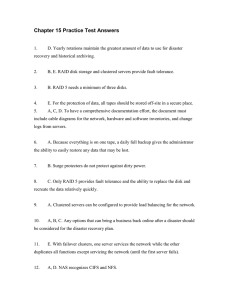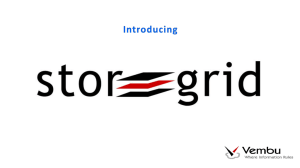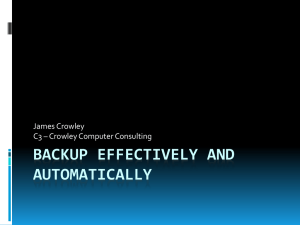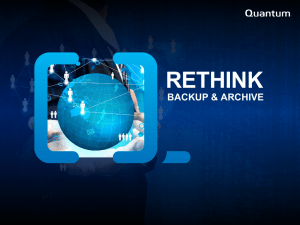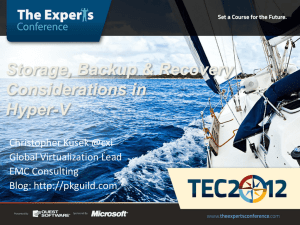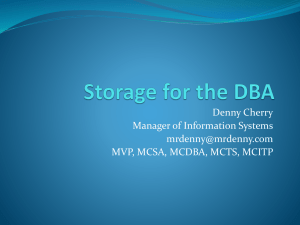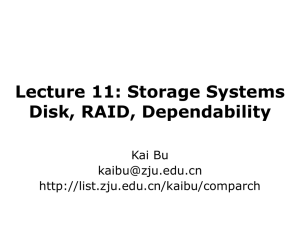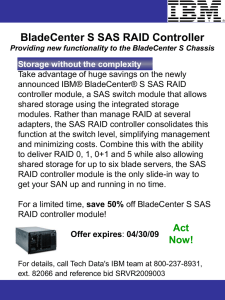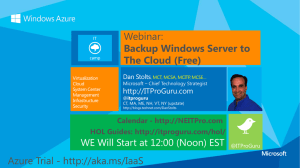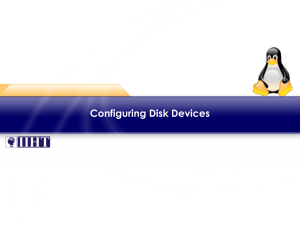Business Proposal
advertisement
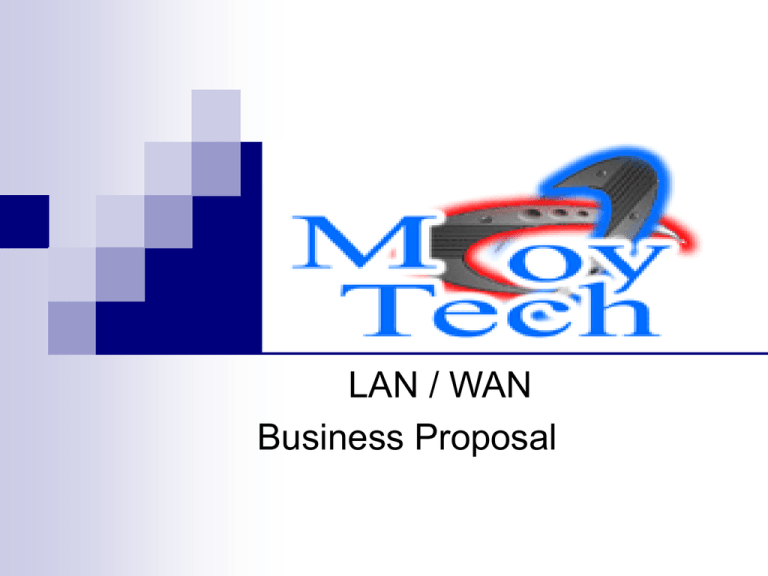
LAN / WAN Business Proposal What is a LAN or WAN? A LAN is a Local Area Network it usually connects all computers in one building or several building within close proximity. Sharing files and folders, virtually as one computer. A WAN is a Wide Area Network that connects computer across a metropolitan area or a collection of several LANs across the world. Why should have a network? Network security is a major concern for all companies. By having a network you are then operating on an Intranet. (An internal private network, only accessible by its internal users with an Internet backbone. ) Allowing for higher security of company data. Benefits vs Restrictions Higher security Less down time 24 hour 7days a week onsite service. Higher productivity Centralized Administration More reliable work stations Backup and Data storage on server No more random downloads (restricted sites) Shared bandwidth (all data packets in and out will be scanned for viruses) Authorized users (create user permissions) Disk Fault Tolerance….. Fault tolerance is the ability of a computer to respond to catastrophic events with no data being lost or corrupted. Fully fault-tolerant systems using fault tolerant disk arrays prevent the loss of data. Disk fault tolerance is not an alternative to a back up strategy with off-site storage. RAID provides fault tolerance by using data redundancy. Writing data to more than one disk, for security in the event of a single hard drive failure. Redundant Array of Independent Disks, a.k.a. Redundant Array of Inexpensive Disks; is a standardization of fault tolerance options in five levels. The levels offer various combinations of performance, reliability and costs. RAID can save you time and money because you lose access to data while replacing the hard drive and uploading data. Types of RAID…. RAID can be implemented as either a software or hardware solution RAID 1 mirrored volumes or RAID 5 volumes using Stripped volumes with parity are the software solutions. With software versions there is no fault tolerance following a failure until the fault is repaired. If a second fault occurs before the data lost from the first fault is regenerated, you can recover the data only by restoring it from a backup. Mirrored Volumes (RAID 1) RAID Hardware Solutions Hardware fault tolerance is more expensive than software fault tolerance Hardware fault tolerance solutions might use hot swapping of hard disks to allow for replacement of a failed hard disk without shutting down the computer and hot sparing so that a failed disk is automatically replaced by an online spare Windows operating system has RAID softwarelevel restrictions that do not apply to RAID hardware-level configurations RAID 5 Parity is a mathematical method of determining the number of odd and even bits in a number or series of numbers. This can also be used to reconstruct data if one number in a sequence of numbers is lost. If a single disk fails, Windows can use the data and parity information on the remaining disk to reconstruct the data that was on the failed disk. RAID 5 Parity Data Stripes RAID 5 RAID 5 uses stripped volumes w/ parity RAID 5 has a cost advantage over mirrored volumes because disk usage is optimized. The more disk you have in a RAID 5 volume, the less the cost of the redundant stripe There are some restrictions that RAID-5 volumes implement in software. First, RAID-5 volumes involve a minimum of three drives and a maximum of 32 drives. Second, a softwarelevel RAID-5 volume cannot contain the boot or system partition The following table shows how the amount of space required for the data stripe decreases with the addition of 2-gigabyte (GB) disks to the RAID-5 volume: Number of disks Disk space used Available disk space Redunda ncy 3 6 GB 4 GB 33 percent 4 8 GB 6 GB 25 percent 5 10 GB 8 GB 20 percent Mirrored volumes Striped volumes with parity RAID 1 RAID 5 Supports FAT and NTFS Supports FAT and NTFS Can protect system or boot partition Cannot protect system or boot partition Requires 2 hard disks Requires a minimum of 3 hard disks and allows a maximum of 32 hard disks Has a higher cost per megabyte Has a lower cost per megabyte 50 percent utilization 33 percent minimum utilization Has good write performance Has moderate write performance Has good read performance Has excellent read performance Uses less system memory Requires more system memory How is this done? The software-level fault tolerance features of Windows Server are available only on Windows dynamic disks. In Windows Server, you create software-level mirrored and RAID-5 volumes by using the Create Volume wizard in the Computer Management snap-in. Data Backup and Storage Files You can store the files on a removable media device, such as an Iomega Zip drive, or on a network location, such as a file server. The file created contains the files and folders you have selected to backup. The file has a .bkf extension. Users can back up their personal data to a network server. Tape A less expensive medium than other removable media, a tape is more convenient for large backup jobs because of its high storage capacity. However, tapes have a limited life and can deteriorate. Be sure to check the tape manufacturer's recommendations for usage. Planning When to Backup You should plan your backup jobs to fit the needs of your company. The primary goal of backing up data is to be able to restore it if necessary, so any backup plan you develop should include how to restore data. You should be able to quickly and successfully restore critical lost data. There is no single correct backup plan for all networks. Determine What to Back Up Always back up critical files and folders that your company needs to operate, such as sales and financial records, the registry for each server, and the Active Directory store . Determine How Often to Back Up If data is critical for company operations, back it up daily. If users create or modify reports once a week, backing up the reports weekly is sufficient. You need to back up data only as often as it changes. For example, there is no need to do daily backups on files that rarely change, such as monthly reports Perform Network or Local Backup Jobs A network backup can contain data from multiple network computers. This allows you to consolidate backup data from multiple computers to a single removable backup media. A network backup also allows one administrator to back up the entire network. Whether you perform a network or local backup job depends on the data that must be backed up. For example, you can back up the registry and the Active Directory store only at the computer from which you are performing the backup. If you decide to perform local backups, they must be performed at each computer, including servers and client computers. There are several things to consider in performing local backups. First you must move from computer to computer so that you can perform a backup at each computer, or you must rely on users to back up their own computers. Typically most users fail to back up their data on a regular basis. A second consideration with local backups is the number of removable storage media devices available. If you use removable storage media devices, such as tape drives, you must have one for each computer, or you must move the tape drive from computer to computer so that you can perform a local backup on each computer. You can also choose to use a combination of network and local backup jobs. Do this when critical data resides on client computers and servers and you do not have a removable storage media device for each computer. In this situation, users perform a local backup and store their backup files on a server. You then back up the server. Recommended.. I recommend a tape backup unit and tape backup software with a pack of tape media. Backups can be scheduled twice a week or as needed. Costs of the Installation Labor=$55 per/hour 8hrs/day = $440 day 3 days = $1320 4 days =$1760 Excluding the cost of the server hardware, software, and cost of wiring tech Network Options….. Dell Servers HP Servers Customized McCoy Tech Servers
